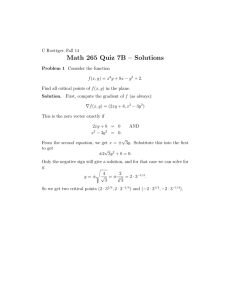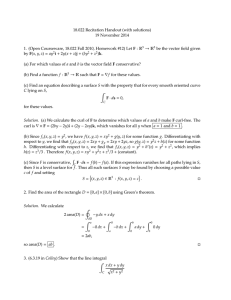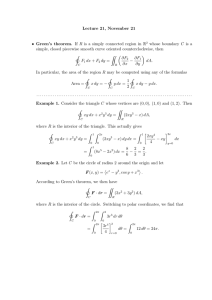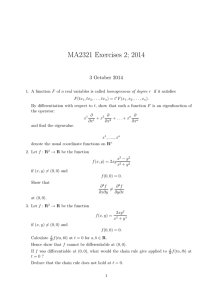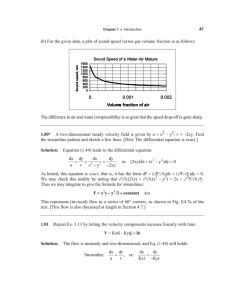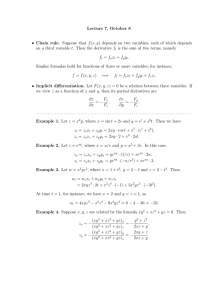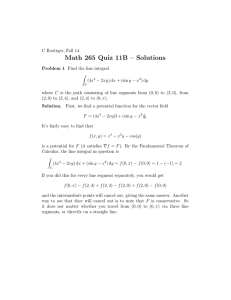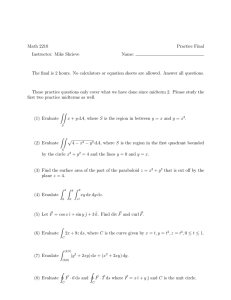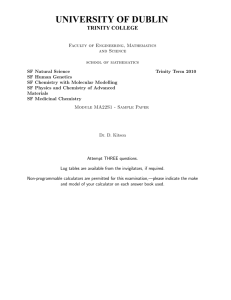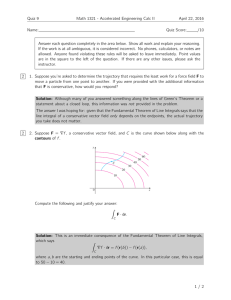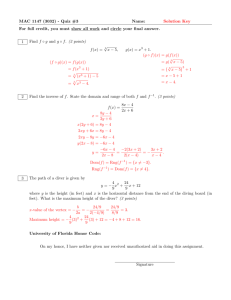Lecture 20, November 16 • ⟩ , F
advertisement
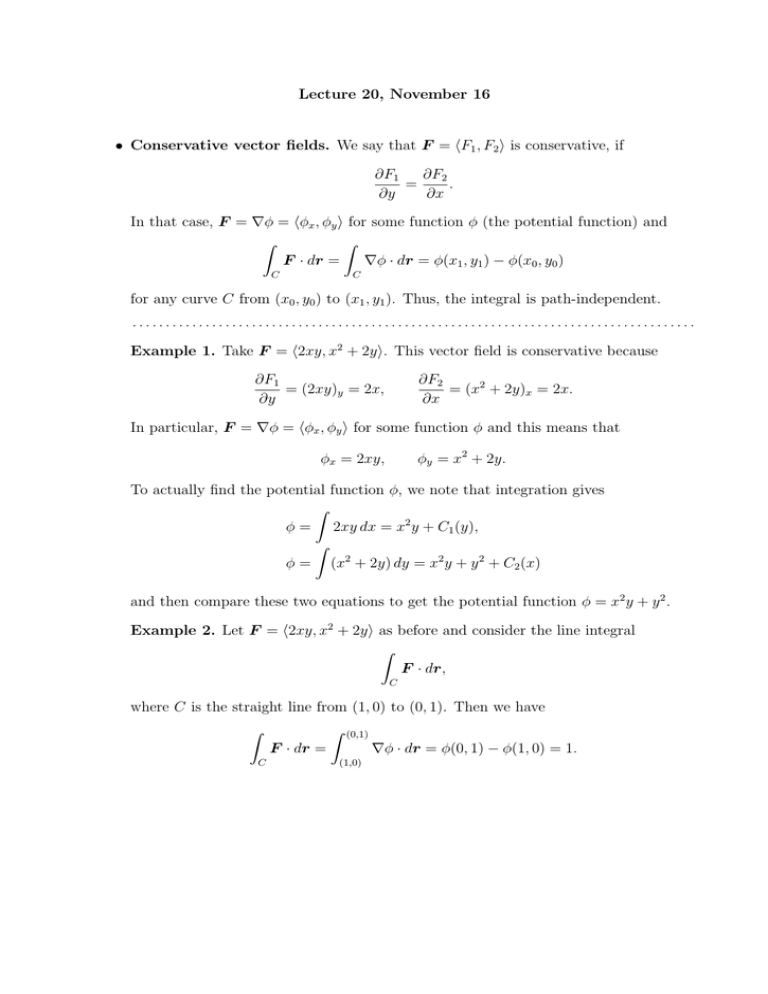
Lecture 20, November 16 • Conservative vector fields. We say that F = ⟨F1 , F2 ⟩ is conservative, if ∂F1 ∂F2 = . ∂y ∂x In that case, F = ∇ϕ = ⟨ϕx , ϕy ⟩ for some function ϕ (the potential function) and ∫ ∫ F · dr = ∇ϕ · dr = ϕ(x1 , y1 ) − ϕ(x0 , y0 ) C C for any curve C from (x0 , y0 ) to (x1 , y1 ). Thus, the integral is path-independent. ..................................................................................... Example 1. Take F = ⟨2xy, x2 + 2y⟩. This vector field is conservative because ∂F1 = (2xy)y = 2x, ∂y ∂F2 = (x2 + 2y)x = 2x. ∂x In particular, F = ∇ϕ = ⟨ϕx , ϕy ⟩ for some function ϕ and this means that ϕy = x2 + 2y. ϕx = 2xy, To actually find the potential function ϕ, we note that integration gives ∫ ϕ = 2xy dx = x2 y + C1 (y), ∫ ϕ = (x2 + 2y) dy = x2 y + y 2 + C2 (x) and then compare these two equations to get the potential function ϕ = x2 y + y 2 . Example 2. Let F = ⟨2xy, x2 + 2y⟩ as before and consider the line integral ∫ F · dr, C where C is the straight line from (1, 0) to (0, 1). Then we have ∫ ∫ (0,1) F · dr = C ∇ϕ · dr = ϕ(0, 1) − ϕ(1, 0) = 1. (1,0)
